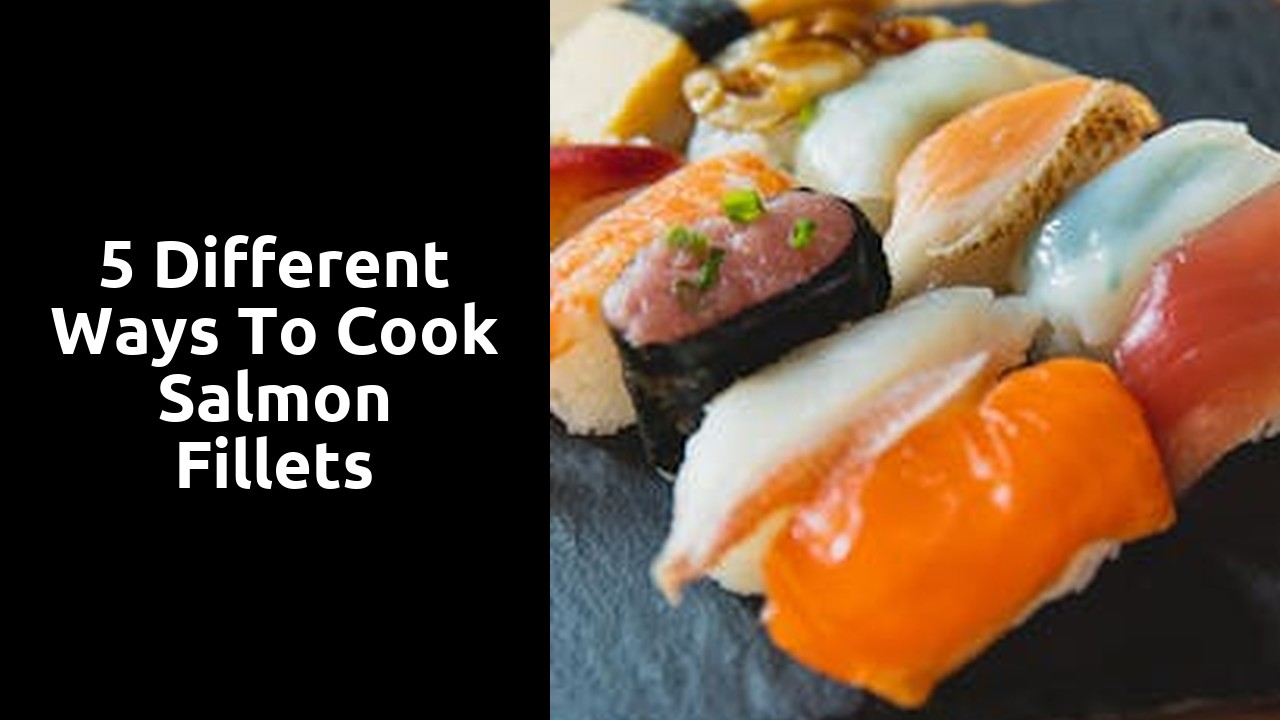5 Different Ways to Cook Salmon Fillets

Salmon Fillets in Parchment Paper
Salmon fillets cooked in parchment paper provide a delightful and healthy meal option that locks in the flavours and moisture of the fish. Begin by preheating the oven to the recommended temperature to ensure the fillets cook evenly and retain their tenderness. Season the salmon with a selection of herbs, spices, and a squeeze of lemon for a burst of freshness.
Once seasoned, carefully wrap each fillet in parchment paper, ensuring they are securely enclosed to prevent any juices from leaking during the cooking process. This cooking method not only results in a beautifully moist and flavourful salmon dish but also allows for easy clean-up post-meal, making it a convenient choice for busy weeknights or special occasions.
Wrapping the Salmon
To properly wrap salmon fillets for cooking, start by laying a piece of parchment paper on a flat surface. Place the salmon fillet in the center of the parchment paper, ensuring it is seasoned and prepared as desired. Next, carefully fold the sides of the parchment paper over the salmon, creating a neat parcel. To secure the parcel, twist the ends of the parchment paper, resembling a sweet wrapper to ensure the juices are sealed inside during cooking. This method is excellent for trapping in the delicate flavours of the salmon as it bakes to perfection.
Wrapping salmon in parchment paper not only enhances the flavour but also helps to keep the fish moist and tender throughout the cooking process. The sealed parcel allows the salmon to gently steam in its juices, resulting in a succulent and flavourful dish. Once the salmon is cooked to your desired level of doneness, carefully unwrap the parchment paper to reveal a moist and delicious fillet ready to be enjoyed. This method is a simple yet effective way to elevate your salmon cooking game.
Smoked Salmon Fillets
Smoked salmon fillets offer a rich and distinctive flavor that is hard to resist. To achieve that delicious smokiness, it is crucial to select the right wood chips for the smoking process. Choose wood chips like alder, oak, or hickory to complement the natural taste of the salmon and enhance its overall richness. These wood chips impart a unique aroma that blends perfectly with the salmon, creating a culinary masterpiece.
Before smoking the salmon fillets, ensure they are properly seasoned with a simple yet effective blend of salt, pepper, and perhaps a hint of lemon zest. This seasoning will act as a base for the smoky flavors to deepen and infuse into the salmon during the smoking process. Once you have the seasoned fillets and the selected wood chips ready, it's time to fire up the smoker and let the magic happen.
Selecting the Wood Chips
For smoking salmon fillets, the type of wood chips you choose plays a crucial role in determining the depth of flavour. Opt for hardwood chips like oak or hickory for a bold and robust smoky taste. These wood chips complement the richness of salmon well and add a distinctive aroma to the dish.
Alternatively, if you prefer a milder smoky flavour, consider using fruitwood chips such as apple or cherry. These lighter woods impart a subtle sweetness to the salmon, creating a more delicate smoky profile. Experiment with different wood chip varieties to discover the perfect balance of smokiness that suits your palate.
Sous Vide Salmon Fillets
For a perfectly moist and tender salmon fillet, consider trying the sous vide cooking method. This technique involves vacuum-sealing the salmon in a bag and cooking it in a water bath at a precise temperature. The controlled environment ensures that the fish is cooked evenly from edge to edge, resulting in a luxurious texture that is hard to achieve through traditional cooking methods.
To prep the salmon for sous vide cooking, season it with your favourite herbs, spices, and a drizzle of olive oil. After seasoning, place the salmon fillet in a vacuum-sealable bag and remove as much air as possible before sealing it closed. Ensure that the salmon is in a single layer to ensure even cooking. Once sealed, set your sous vide machine to the desired temperature, typically around 45-50°C, and cook the salmon for about 40-60 minutes. The result will be a succulent and perfectly cooked salmon fillet that is sure to impress even the most discerning seafood connoisseur.
Prepping the Salmon for Vacuum Sealing
Before vacuum sealing your salmon fillets, it's essential to make sure they are prepped correctly. Begin by patting the fillets dry with paper towels to remove any excess moisture. This step helps ensure a better seal and prevents ice crystals from forming during freezing.
Next, season the salmon to your liking with a sprinkle of salt, a dash of pepper, and a squeeze of fresh lemon juice. Allow the seasonings to infuse into the fillets for a few minutes before placing them in the vacuum-seal bags. Be mindful not to overcrowd the bags, as this can prevent a proper seal and even cooking.
Related Links
Why Salmon Fillets are Perfect for GrillingWhy Broiling Salmon Fillets is a Healthy Cooking Method
Roundup of Salmon Fillet Cooking Techniques
Review of the Best Cooking Methods for Salmon Fillets
The History of Salmon Fillet Cooking Methods